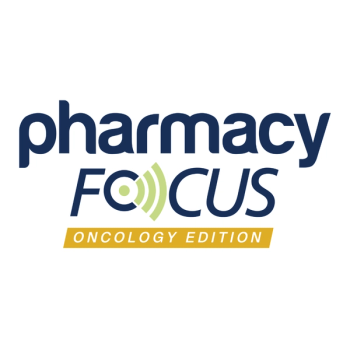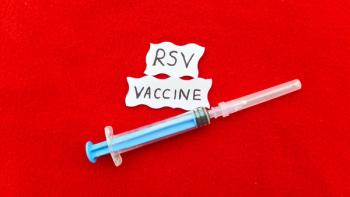
The Role of Pharmacists in Addressing Patient-Specific Factors and Advancing CAR T Cell Therapy
Dan Schrum discusses the integral role of pharmacy specialists in translating clinical trial results to clinical practice.
Dan Schrum, PharmD, BCOP, inpatient lead for the Cellular Therapies Group at Duke University Hospital, underscores the vital role of pharmacy specialists in guiding patients and healthcare professionals through the complexities of CAR T cell therapy.
Pharmacy Times: How do patient-specific factors, such as prior treatments and overall health, impact the likelihood of CAR T cell resistance?
Schrum: I think the two biggest points here are previous antigen exposure, or antigen targeted exposure, and the use of specific cytotoxic agents. In terms of targeted antigen exposure in the case of multiple myeloma [MM], BCMA is probably the best example because there are 2 FDA approved CAR T products that are BCMA-targeted. Before belantamab [Blenrep; GSK] was removed from the market, there was some data that had come out to show that individuals who had gotten belantamab and then were treated with CAR T after had worse outcomes. Antigen loss likely plays a role here but the data on that is still developing.
There are some consortiums ongoing right now, for which we're a part of, looking at teclistamab [Tecvayli; Janssen Biotech, Inc], and talquetamab [Talquetamab; Janssen Biotech, Inc] and subsequent treatment with CAR T, or vice versa. And the response rates that I mentioned with the belantamab data seem to be mirrored in what we're looking at now. Now, I will say that there’s interesting discussion regarding if there is a certain time point at which one would feel comfortable using a BCMA-targeted agent first and then re-trialing a BCMA-targeted agent later down the line. And that's something that we're really hoping to answer, because that's a big question mark. Inevitably, these folks are going to see probably more than 1 BCMA agent or already have more see more than 1 BCMA agent. So, the question is, when is the safest time?
That ties in pretty nicely with previous T cell toxic agent use, specifically bendamustine, which has had a lot of data come out over the past couple of years. Use of bendamustine, especially 9 months or sooner prior to apheresis, can have a substantially worse outcome in terms of CR [complete response] rates, PFS [progression-free survival] rates. Data on overall survival is a little more questionable, but we certainly have robust data to show from large trials that there are effects from use of agents like bendamustine prior to CAR T.
Pharmacy Times: Can you describe your experience in translating CAR T cell therapy from clinical trials to routine clinical practice?
Schrum: For any cellular therapy that we use at Duke, we have very standardized procedures that we follow. I play a role in that, including data review followed by formulary assessment. In addition, if appropriate, REM certification and training. I play a large role in education of the staff for items such as REMS, treatment plan building and editing, and guideline development. It's a large role that I play along with the physicians that I work with. I work very closely with our procurement partners, because, as this is also an underrated aspect, how do we get the drug, especially in the case of these cellular therapies? There’s oftentimes a lot of hoops to jump through and they're exceedingly expensive. So that's a really important role that the pharmacists in general here at Duke play, especially the procurement folks.
Pharmacy Times: What advancements show promise in helping to improve CAR T cell therapy efficacy and overcome resistance?
Schrum: We’ve talked about a little bit in terms of some of the ways that lymphodepletion is being augmented. But I think something like the use of an alternative agent, like bendamustine, is something that we may start to see being used more frequently. There's some data that has come out in the past couple of years that bendamustine use prior to apheresis is a bad thing. But bendamustine use as a lymphodepletion agent is something that, at least at Duke, we don't use very often, but the data for it is growing. Now, whether we use it alone or in combination, and what's the best combination and dosing of it, is still up in the air. But I think that bendamustine has shown a lot of promise as a T cell toxin as a part of lymphodepletion regimens.
There's also some data coming out for the use of pharmacokinetic monitoring for fludarabine [Fludara; Genzyme Corporation] and tailoring doses during lymphodepletion, similar to what we do for busulfan [Myleran; Novartis Pharmaceuticals Corporation] on the stem cell transplant side. We don't currently use this at Duke. There's just not enough data for it right now. But there is some interesting data out there supporting the use of PK monitoring for these patients and whether or not you might get more bang for your buck with fludarabine to prevent toxicity, but also maximize the lymphodepletion effects of it.
And something else that we haven't talked about much yet, but something that I think is pretty interesting and that we know plays somewhat of a role in terms of persistence and toxicity, is the costimulatory domains that are used for CAR T. All of the CAR T agents on the market right now either have a 4-1BB (CD137) or CD28 costimulatory domains. It's been shown 4-1BB has better persistence than CD28. But there are also novel costimulatory domains that have not gotten as much attention, like CD27, that could potentially be used to help with persistence and to overcome some of the issues that we've had with exhaustion.
Pharmacy Times: What integrated strategies or innovations do you believe will most significantly enhance patient care and improve treatment outcomes in the coming years? What role do pharmacists play?
Schrum: I'll take the toxicity tack in this one and say the most important area that I'm interested in is continuous home monitoring devices for these patients. There are some clinical trials on going out there for temperature tracking, blood pressure tracking, heart rate tracking, O2 set tracking that can be done at home with wearable devices. And while we don't necessarily do that as standard of care here at Duke, there has been some work with that. And some of the results have been very interesting to see. If nothing else, it allows us to be able to send a patient home a little bit earlier than we might be able to, but still have that inpatient feel for somebody. We're able to get continuous vital sign monitoring and they can call us, or we can give them a call, at that first sign of fever or that first sign of shortness of breath. We’re saving money on the lack of inpatient admission, or even the lack of day clinic follow up, but we're also going to be able to save money in regards to better patient safety and better patient care. We’re going to have these folks presenting at sign of first symptom as opposed to when they're really, really sick because nobody has been watching them, or they haven't been able to tell us how sick they've been. So, cost savings plus benefit for the patient.
In terms of the role that pharmacists play, I think it's very broad. I think we need to be well versed in a lot of different areas. Especially for folks that have specific cellular therapies pharmacists, like we do at Duke, we have myself on the inpatient side, and then we also have an outpatient cellular therapies pharmacist. We pretty much cover all of these areas that I'm about to mention starting with being very familiar with current literature dealing with both lymphodepletion strategies, augmentation of it, efficacy and safety of CAR T, toxicity monitoring, appropriate agents and methods to use for toxicity both on the inpatient and outpatient side.
I think antigen loss and sequencing of therapy is very important. One of the reasons why I like our group here at Duke is, contrary to a lot of other institutions, our cell therapy group that does CAR T is on the malignant hematology side. I see a lot more of the treatment that these patients are getting prior to coming to CAR T, and that allows me to play a larger role in saying, “hey, we need to think about the fact that this patient could be going to CAR T in six months. This is an agent we need to either reconsider using or maybe waiting until farther down the line to think about using.” So, we're able to work really well with our malignant hematology colleagues to make some of those decisions.
Bridging chemotherapy is something we haven't talked about yet. Bridging chemotherapy ties in with what I was just talking about with planning ahead, looking forward to the expectation that some of these people will be getting CAR T in the future and thinking about appropriate bridging, especially with things like bendamustine. If they haven't been apheresed [removal of blood plasma], then bendamustine could be a bad idea. If they've been apheresed, it might not be a bad idea, because lymphodepletion with bendamustine has some decent data for it. Outside of the resistance setting, REMS policies and guideline pathway development. Infection prophylaxis is something we haven't talked about yet either, but it's a big role that we play here. We work very closely with our infectious disease colleagues for infection prophy and guideline reading. And we make sure that we're using the best available therapies to help prevent infections in our patients too, because that's certainly a real risk as well.
Newsletter
Stay informed on drug updates, treatment guidelines, and pharmacy practice trends—subscribe to Pharmacy Times for weekly clinical insights.




















































































































































































































